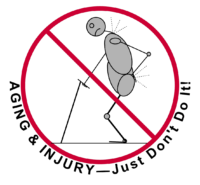IS IT POSSIBLE … That C.E.M.&.N.T. . . .
… (Chronic, Excess Muscle & Nerve Tension & Stress) …
otherwise known as “Tight Muscles,” is a Primary Cause of
many aches, pains & dysfunction, of lost range of motion, of
many symptoms and conditions of the nerves, muscles,
fascia, joints & organs of the BodyMind?
IF SO, would having a Superior Knowledge of how the
Neuro-Musculo-Fascial Systems of the body work, and
how they break down, and how to Evaluate & Treat them,
making YOU More Effective & Valuable as a Mindful Medical
Massage Therapy & Myo-Structural Bodywork Practitioner?
And a Postural / Structural Yoga Therapist?
In Today’s Times of Uncertainty & Confusion, YOU
Need An EDGE … Preferably, a LEADING EDGE …
Mindful Medical Massage Therapy & Myo-Structural
Balancing & Bodywork Might Provide YOU with The
EDGE You Need to Solve Complex Soft Tissue Issues
of Your Clients or Patients other Therapies have
NOT Resolved.
YOU TOO can become an Acknowledged Expert, a Trusted
Authority, in the workings of the Psycho-Neuro-Musculo-
Fascial & Joint Systems of the Human Body.
AND, in these Days of COVID-19(84) Driven Politics,
YOU TOO Need to RECLAIM Your Position as an
ESSENTIAL Service, NOT as an “Optional” or
“Non-essential” Provider.
Introducing DSL Edgework’s Mindful Medical Massage Therapy & Myo-Structural Bodywork with Postural / Structural Yoga Therapy
Access Your Member’s Educational Programs LOG IN HERE
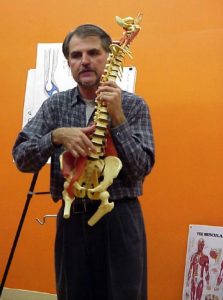
YOU TOO Can Take Advantage of DSL’s FORTY YEARS of Experience & Education, Research & RESULTS, and Become A Leading Edge EXPERT in:
-
-
Mindful Medical Massage Therapy
-
Myo-Structural Bodywork
-
BIO-Structural Analysis & Balancing
-
Postural / Structural Yoga Therapy
-
Tai Chi-based Movement & Exercise Therapy
-
Internal & External Ergonomics
-
Based On A Unique, Wholistic Integration of:
-
-
Whole Health Therapeutics
-
In-Depth Medical & Physical Sciences
-
Advanced Structural Anatomy & Functional Kinesiology
-
Neuromuscular / Myofascial Physiology & Neurology
-
Musculo-Skeletal Pathology
-
A Wholistic Philosophy, Psychology & Science of Being Human
-
DSL Edgework’s EdgeTouch® Technique is a manual, Soft Tissue-focused, Meditative or Mindful Medical Massage Therapy. It is a subset of Mindful Medicine or Integrated Health Systems for reducing or eliminating chronic, excess muscle & nerve tension & stress (or C.E.M.&.N.T. for short).
C.E.M.&.N.T. is responsible for a surprisingly wide-range and high number of symptoms and conditions in the nerve, muscle, fascial, & joint structures of the body. This can also affect the metabolic systems.
[SEE MORE on C.E.M.&.N.T. HERE]
Myo-Structural Bodywork & BIO-Structural Balancing is the method for developing the STRATEGY of WHICH muscles to work with, in WHAT sequence, and WHEN. This can be THE DIFFERENCE between whether the desired therapeutic results are achieved … or not.
BIO-Structural Balancing is based on the fact that many aches, pains, dysfunctions, restrictions of movement, and traumas or injuries of the body are caused, in great part or in whole, by other areas of the body from where the symptoms are.
This approach includes a modified form of Neuromuscular (Trigger Point) Therapy (TPT) and Myofascial Release (MFR), yet goes well beyond those methods. There are similarities with “Deep Tissue” Therapy, with significant differences such as NO PAIN, More Gain.
Yet one well known practitioner and teacher of TPT says trigger points are the root of much or most pain or dysfunction. YET … WHAT is it that causes trigger points?
Technically speaking, Trigger Points are localized musculo-fascial areas that, when pressed, trigger pain patterns radiating from that area, often to places somewhat or very distant from that trigger point.
Trigger Points are a very controversial phenomena. Though it is difficult to deny their existence (whatever they are), there is MUCH controversy as to their true physiological nature and how they work.
Mapping the Trigger Points reliably can only be done up to a point. The commonly available trigger point charts are a start, but they cannot be complete on their own. Dr. Simons, coauthor with Dr. Janet Travell of the classic text, Myofascial Pain and Dysfunction: The Trigger Point Manual available at Amazon, said that after years of research, he found that fully mapping the trigger points was not at all precise, and there were far too may possibilities to completely map and organize.
Therefore, highly experienced practitioners know that Advanced Trigger Point Therapy does NOT rely very much on the trigger point charts except for the most basic and easy conditions, but on a deep exploration of the Client’s unique situation, much like a Neuromuscular Detective.
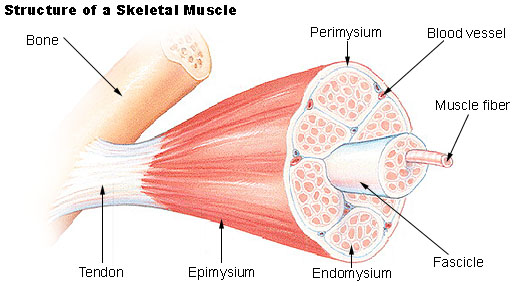
The fascial sheaths — the epimysium, the perimysium, and the endomysium — are tightly integrated and obviously inseparable from the muscle cell fibers, the fascicles and muscle belly.
Myofascia generally refers to the “musculo (myo) – fascial” units traditionally called “muscles,” including the muscle cells AND fascial sheaths, as integrated, synergistic UNITs.
Myofascial:
Referring to skeletal muscle and its surrounding fascia.
Segen’s Medical Dictionary. © 2012 Farlex, Inc.
Yet in the last decade or two, many practitioners speak of “myofascia” as only the fascia surrounding the muscles, as if fascia is somehow separate from the muscle cells. … Yes, they ARE different, but only separable by the surgeon’s scalpel.
Scientifically, there is the Superficial Fascia that is the deepest layer of the skin, and the Deep Fascia that is the sheathing of the muscle cells. Yet much of the “deep fascia” is just under the surface of the skin, not “deep” at all.The word myo-fascia means, literally, the fascia of the muscle, so that term refers to the deep fascia. Functionally, the idea you can treat or stretch the “myofascia” or “deep fasciae” separately from the muscle cells appears to us to be a COMPLETE Myth.
Understanding those distinctions and anatomical / functional differences can make a BIG difference in how one understands, evaluates and treat the humans of tissues.
Knowing HOW It Works,
Tells You HOW to Work It!
BIO-Structural Analysis & Balancing, including Postural Evaluation, postulates there are (at least) FIVE Primary Sources or Relationships to consider when evaluating a Client’s pain and/or dysfunction.
-
- Localized Pain or Dysfunction
- Neurologically Transmitted Pain or Dysfunction
- Structurally Transmitted Pain or Dysfunction
- Antalgic Pain or Dysfunction
- Mentally / Emotionally based Stress & Tension
Determining which of these five factors is predominate, or what combination, is critical to assessing a Client’s or Patient’s conditions. Sometimes, the area most responsible for causing a pain or limitation is surprisingly distant from where the pain or symptom is felt. It is often distant from and on the other side of the body!
Not addressing these other potential trouble areas of the body can make the difference as to whether the Client heals or not, or in some cases, gets worse from treatment. Or, they get better from working on the point of pain or dysfunction, but the problem keeps coming back.
A unique method of Postural Evaluation is a major part of evaluating & determining where these other sources of trouble are located.
Mindful Medical Massage Therapy
Why NO Pain Means MORE Gain
It’s Easier to Open the Door Before You Walk Through IT, and You Can’t Peel an Onion from the Inside Out.
~ David Scott Lynn
Many Soft Tissue Approaches to massage & bodywork are very aggressive in how much pressure they use to “overcome” the tensions in the musculo-fascial systems of their Clients or Patients.
It’s like they can peel an onion by digging in really deep rather than going thin layer by thin layer. Yet muscles are in some ways like onions. They have a multitude of very thin layers, that each have more-or-less independent existence of functions. Each thin layer must, or should, be addressed layer by layer.
The therapists often think or feel like they are “breaking up” the hardened tissues, breaking through the doors rather than opening them up, saying things like the tissues are “crystallized,” or “calcified,” or “adhesions” have built up. (Not that those things cannot happen, but we find them to be quite rare.)
And of course, there are those therapists who tell their clients they have to “breath through” or “work through” the pain to get better.
For Example, many Deep Tissue Therapists act as it they have to get “deep” into the tissue really fast to find and treat the problems at hand. (No pun intended, but there it is!)
And YES, very frequently, very aggressive therapy WILL work with many Clients. But for some, either they do NOT get better, or the problem keeps coming back, or they get worse. Sometimes, a LOT worse!
Such negative results are all too common, and that’s the kind of clientele I seemed to attract in my career, even early on. So I had to figure out a better way for that group of Clients.
While the sciences behind what’s really going on, and the many Myth-Conceptions operating there, are too many and complex to discuss here, suffice it to say many therapists have a very misguided “picture” in their mind of what’s really going on in their Client’s or Patient’s bodymind.
With Mindful Medical Massage Therapy & Myo-Structural Bodywork, we find that working WITH the psycho-neuro-musculo-fascial stresses, tensions & tissues, rather than getting into “combat” with, or “working against” them, works much better in long-term, chronic cases. That’s especially true the more traumatized or injured the Client is.
In fact, we often find that the tighter a Client is, the LESS pressure we use works much better. It’s about finessing the soft tissues, not forcing the soft tissues.
When working with a Client, we prefer they keep in close communication with us, and frequently let us know how much pain or discomfort they are experiencing. If so, we ask them to direct us to ease up the hands-on pressure so they LIKE or are NEUTRAL about what the are experiencing. We want them to INVITE, NOT FIGHT the sensations produced by our manual therapy.
Some Clients literally will keep in VERY close contact, often giving us minute-by-minute feedback of what they are feeling rofch of the session. That’s because as the soft tissues relax & lengthen, their sensation levels change dramatically. And sometimes, as we sink into their tissues, we might move in to fast, and the pain will increase some.
Bringing Mind into the Musculature,
Such that Distinctions Between Them Dissolve,
Is the Essence of Mindfulness in Bodywork & Yoga.~ David Scott Lynn
In mindful therapeutic massage, while us bodyworkers can read bodies, most of us cannot read minds. And the Client’s experience of pain, while initiated in the soft tissues, is actually created moment-by-moment in the mind, and is very fluid. So we don’t often know if the pain is increasing unless you tell us.
Yes, that brings the Client into a process of Participatory Medicine, rather than Spectator medicine. The Client needs to be more responsible for and interactive about what’s happening.
Yet this way, we can get much deeper into the tissues, and stay in a lot longer, to search and dissolve the Client’s areas of tension & stress. And because they are not in pain, or trust that we’ll back off when they ask us too, they often get VERY relaxed in the process, rather than fighting what we are doing.
ALSO, if we stay in the range of lower intensity of sensation, we are more likely to trigger the parasympathetic nerve functions. Those are what facilitate the rest, regeneration, healing, and immune functions of the body..
If you’d like to know more about this NO Pain, MORE Gain approach, PLEASE CLICK HERE.
— B.E.S.T. —
Breathing Exercise & Stretching Technique
Let-Go Yoga is a low-intensity, highly therapeutic Breathing, Exercise & Stretching Technique. It includes Tai Chi & Chi Kung-based Movement & Exercise Therapy and Internal / External Ergonomics
Postural Yoga Therapy is designed to work with DSL’s hands-on techniques to further reduce or eliminate C.E.M.&.N.T. and increase results from hands-on therapy.
Yoga also allows the Client to maintain their results on their own efforts after therapy is complete.
For those familiar with Homeopathy, DSL uses low-intensity levels, or “homeopathic doses” of manual pressure — or low-intensity stretch in yoga postures (conscious stretching) — to release tension, stress and C.E.M.&.N.T. in the physical / mental bodymind.
NO, we do not use the little white pills homeopathy is best known for in America. We believe in the First Principle of homeopathy, that being, To Remove The Obstacles To Cure. So if the Client or Patient has too much muscle tension, or “tight muscles,” we first need to remove that obstacle to cure by relaxing those muscles.
And if tight muscles are their obstacle to cure, and you remove that obstacle, the little white pills are unnecessary.
All of this uses a science-based foundation of Whole Health Therapeutics to both Evaluate, Understand & Treat the Client’s Bodymind to their greatest overall health advantage and objectives.
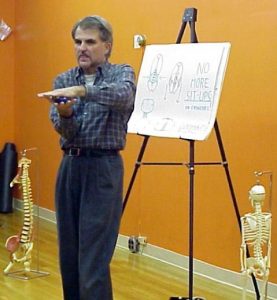
The above is just a snap-shot of the kind of Knowledge & Insights you’ll attain by working with DSL.
DSL’s Objective is to Help YOU, the Therapist, Become a Trusted Authority, an Acknowledged Expert, in Working with Your Client’s Psycho-Neuro-Musculo-Fascial & Joint Systems of their BodyMind, from a Whole Health Perspective.
You Can Learn to Apply Principles & Practices of ADVANCED Mindful Medical Massage Therapy, Myo-Structural Bodywork, BIO-Structural Balancing & Postural Yoga Therapy to the More Complex, Long-Term Chronic, Soft Tissue Issues of Your Clients.
And of course, many short-term, acute soft tissue issues respond to this therapy as well.
CLICK HERE for an In-Depth
OVERVIEW of DSL Edgework
LEARN About DSL’s Training & Coaching Programs and Success Blueprints HERE
LOG IN to Access Your Educational Programs HERE
TESTIMONIALS on
DSL / David Scott Lynn
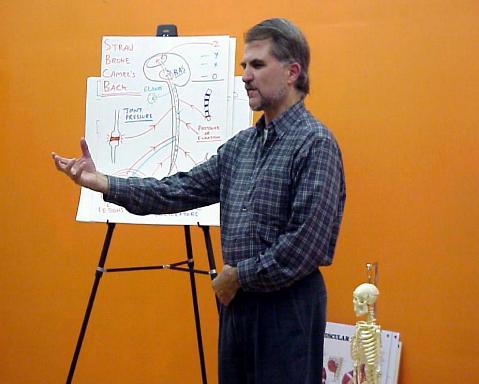
David Scott Lynn (DSL) got into Martial Arts & ZEN Meditation at age 13 (1967). Then, he spent several years in his late teens/early twenties as a Structural Ironworker (heavy steel construction) Foreman, where he learned about the physics and strategies of balancing steel structures for his Father, John. This knowledge & experience helped David’s ability to analyze and balance the human structure, as well.
DSL began doing yoga at 19 years old, then began Teaching Yoga in 1976. Soon after, he began studying Massage & Bodywork extensively on an informal basis with several Leading Edge Practitioners & Instructors around America. He also spent some time in Oriental Medical School in Chicago.
With no formal training, DSL began Private Practice of Medical Massage & Bodywork in Near North Chicago in 1981. In 1982, he studied Structural Bodywork with Daniel Blake, a direct student of Dr. Ida P. Rolf (Rolfing® & Structural Integration). He also studied several psychotherapeutic approaches to bodywork, including HAKOMI Body-Centered Psychotherapy.
DSL quickly gained a reputation for producing Results other therapists had not achieved for many of his Clients.
DSL began extensive studies of the relevant sciences of medical massage & bodywork therapy. He also worked side-by-side with several Leading Edge Medical Doctors & Osteopaths, learning about high-level Metabolic & Functional (Alternative) Medicine and deeper insights into how the bodymind works in Health & Sickness.
He then suffered several years of severe, often debilitating back & hip pain, resulting from his years in heavy construction and many crashes while racing motocross. No one could help him get out of pain, so he started attempting to apply all his new therapeutic knowledge to resolving his own issues.
Integrating his background in Martial Arts & Meditation, building steel structures, extensively practicing & teaching physical, mental & relational yoga, various approaches to alternative medicine, and various forms of massage & bodywork, and finally, the a BIG Strategic Key being the Structural Bodywork Training from Daniel Blake, he began creating the DSL Method of Psycho-Muscular Release & Structural Balancing (now known as DSL Edgework).
Finally, after three and a half years of pain, he for the first time saw a full body X-ray of his structure. He instantly knew what he had been, and not been, doing that perpetuated his troubles. He developed his specialized, yoga-based self-treatment plan, and began the process of returning to normal. This was the foundation of developing his therapy system, the DSL Method.
DSL applied the yogic principles to the manual methods he had been learning, along with structural analysis, creating a hybrid system. You can read about the development of the work at the link at the end of this page.
Soon, his Students & Clients included several Presidents and Executive Board Members of the AMTA (American Massage Therapy Association) and founders of several major massage schools in the country.
DSL began teaching his therapeutic methods in the 1990s, starting in 1989 at Heartwood Institute in Northern California for a year. He had students from all over the world who came to study FULL TIME anywhere from one to three months on a residential intensive basis. He then traveled the country, teaching his methods in many states.
In 1992, he joined forces with Linda Calandro, who was a Leading Instructor for the St. John Seminar Systems, teaching American NMT nationwide. This NMT method was based on the work of Drs. Raymond Nimmo & James Vannerson (DCs) and their soft tissue system of Receptor / Tonus Technique. Collaborating with Linda, this led David to do further, extensive studies in neuromuscular & myofascial physiology & neurology. In the process, he re-evaluated the Neuromuscular Laws, reconstructing them to be more in line with updated physiological and neurological understandings.
David is also known for clearing up many Myth-Conceptions about yoga and bodywork, and treatment of soft tissue therapies.
He then took a decade off to write books and take care of his elderly & sick parents. He is now back to Share with YOU his forty plus years of Knowledge, Experience & Insights as a Professional Yoga / Bodywork / Whole Health Therapist & Educator
For an IN-DEPTH History & Biography of DSL
& The DSL Method, PLEASE CLICK HERE
To see the Courses available in the DSL Edgework
Members Area, PLEASE CLICK HERE
Thank You for Reading,
David Scott Lynn (DSL*)
* DSL: Your Hi-Touch Up-Link to the Inner-Net*
* Inner-Net: Your Psycho-Neuro-Musculo-Fascial System
